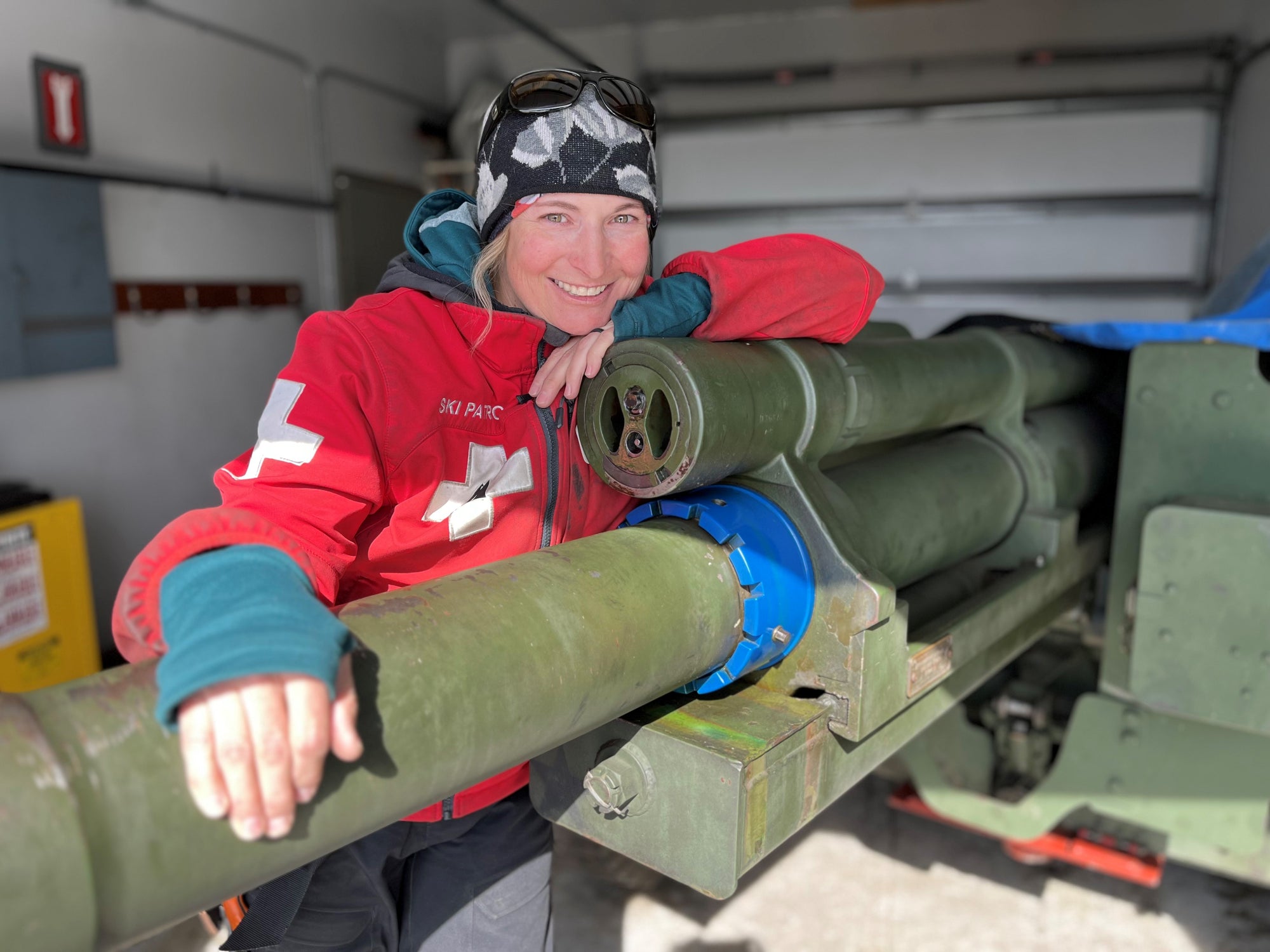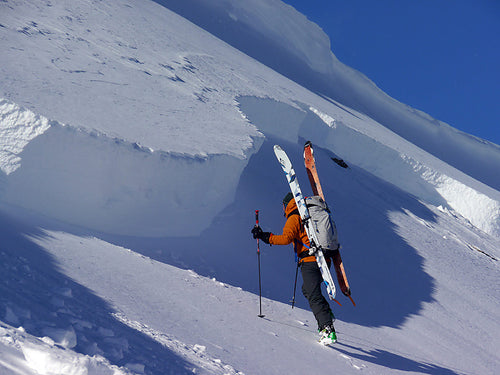Meet Jamie Yount, a longtime avalanche transportation expert who’s now running a remote avalanche mitigation company. His job: make the roads into the mountains as safe as can be.
[Note: This is part one of a series called The Invisible Hands of Avalanche Work, a five-part series that’s brought to you by Flylow and the American Avalanche Association. The point of these stories is to get to know some of the hard-working, behind-the-scenes folks who conduct the critical avalanche work that keeps the rest of us safe.]

Photo by: Brian Gorsage
Jamie Yount has a complicated relationship with snow. A longtime skier who grew up in Bozeman, Montana, he’s worked in transportation for the past two decades. Formerly an avalanche technician for the Wyoming Department of Transportation, he then spent six years doing avalanche mitigation work for the Colorado Department of Transportation. These days, Yount is based in Boulder, Colorado, and works as the CEO of Wyssen USA, a Swiss company with subsidiaries throughout Europe, North America, and South America that designs state-of-the-art avalanche towers and software systems for remote avalanche control work. We spoke to him about staying humble, operational challenges, and what happens when Mother Nature gets mad.
I’ve worked in transportation for 21 winters. The job is to keep people safe, and I take that very seriously. You make a plan, you stick with it. But you’re going to have to adjust as you go through the storm. You have to be humble, not force things. Machines will break. You might trigger a big avalanche, then you’ve got a debris pile in the highway that’s 30 feet deep. I’d like to say I’ve seen every type of operational challenge during all my winters on the highway, but I’m not fooled by the fact that there’s always going to be something new that comes up.
I grew up skiing at Bridger Bowl. My stepdad had worked there since the ’70s and was general manager. I saw avalanche forecasters when I was a teenager and I was like, ‘How do I get that job?’ So, I got a meteorologist degree and ended up at the Wyoming Department of Transportation, where I learned how to shoot a howitzer and drive a snowplow. You’re forecasting, but then you’re also going out to do mitigation work. You’re making a prediction about what you think is going to happen, then you’re hitting a slope with explosives. That’s what got me into this.

I’ve always had a real passion for snow and skiing. But these days, when it snows a foot, I don’t get to ski powder; I’m working. A foot of snow can bring a lot of problems.
It all starts with the forecasting piece. That happens every day, regardless of what the weather is doing. When you get into a storm system, the pressure on operations goes up. The safety of the road is paramount for the public, as is the safety of our workforce that’s working to clear the snow.
On a snowy morning when there’s avalanche mitigation going on, there are a lot of things that happen in the background. Snowplowing, coordinating a road closure, staging equipment in case avalanche debris comes down onto the highway and we have to clear the roadways.
Once we get the road closed, we’ll do the mitigation work. If snow comes down, we need to clear the road and get it back open. We try and do that as efficiently as possible. Keeping people safe is the mission, but running an efficient operation also matters.
A lot more terrain these days can be controlled using remote avalanche control systems, which are safer for the workers, require fewer people, and the work can be done quickly and efficiently. Remote avalanche systems are the future of avalanche mitigation and that’s why I am working for Wyssen Avalanche Control now. But there are still areas where transportation departments rely on projectiles, like surplus military artillery. When things get really exciting, in the more infrequent avalanche paths, they might be flying a helicopter and using big explosive charges.

Mother Nature, she’s angry sometimes. It’s exciting to witness that power. But there are also moments when it’s downright scary. Being in a highway corridor with natural avalanches happening around us, that’s a moment where you say, ‘We shouldn’t be here.’
Talk about a challenging operating environment: Managing avalanche terrain along the I-70 corridor in Colorado. You’re talking up to 40,000 cars a day driving through the Eisenhower Tunnel at 11,158 feet.
You’re always going to get surprised in this business. You’d be foolish to tell yourself you’re so good at this that you know exactly what’s going on.
The challenge of the transportation industry is our roads are open 24 hours a day, 7 days a week. It’s not a ski area that’s open 9 to 4. The avalanche piece is the easiest part; it’s managing expectations and logistical challenges that are hard.
I’ve learned to learn from my mistakes. Take notes throughout the season, look back on them. If it’s happened before, it’s going to happen again. You need to be prepared for every winter to be the worst you’ve ever seen.
There are a lot of people working hard to get these roads open. Everyone takes pride in what they do. They want those roads open, but they can’t be open all the time because Mother Nature is calling the shots. We’re doing our best, but sometimes, these roads just need to be closed.




